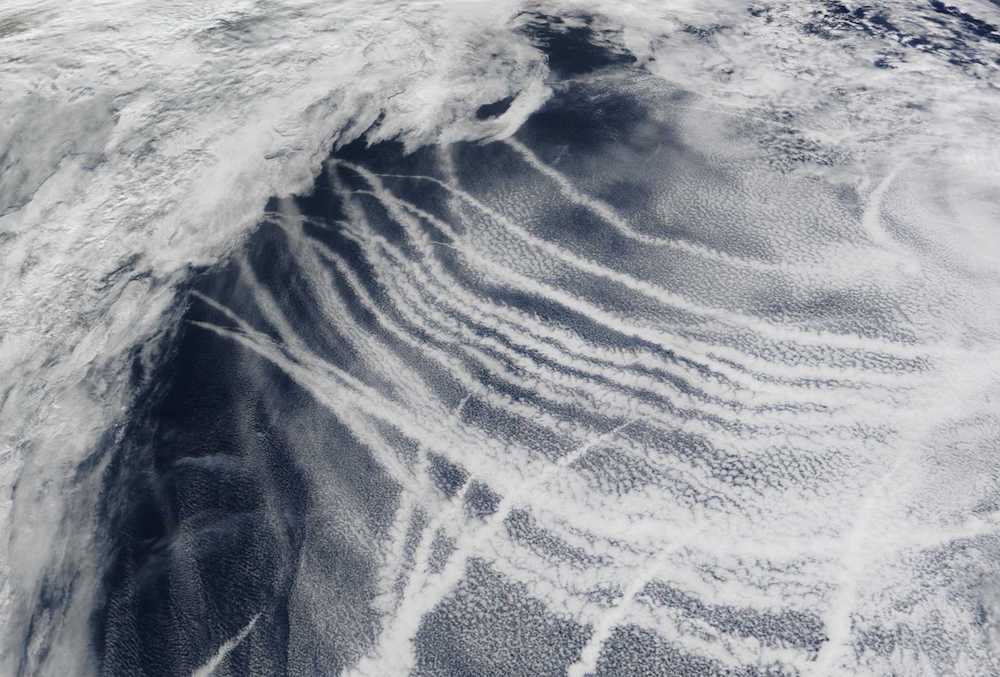Air pollution from ships will likely slow rising Arctic temperatures, researchers say
As more ships travel through the Arctic, their exhaust can be expected to lead to the formation of clouds that will slow temperature increases.

Arctic shipping is one of the paradoxes of global warming. Rising temperatures tied to increased carbon pollution from things like transportation have resulted in less sea ice. That, in turn, is increasingly making it possible to sail on routes between Asia and destinations in North America and Europe that, in some cases, are 40 percent shorter than conventional routes through the Suez and Panama canals.
For shippers moving the types of cargoes that can benefit by sailing on the alternate routes, the shorter distance can save costs by cutting the amount of time and fuel it takes for ships to reach their destinations — reducing, in the process, the emissions that set up the warming process that melts the ice.
Factors other than distance contribute to the cost of shipping something, but at least in some cases, the shorter route might wind up saving shippers money. Environmentally, there may also be some benefit, if the volume of shipping increases enough to result in a significant reduction in emissions.
Locally, the focus has been more on how increasing volumes of ship exhaust will affect people’s health. What will happen in the event of an accident is also a concern, too, though safety regulations put into place in 2017 are intended to protect human life and the environment by seeking to minimize the risk of accident.
[Canada updates Arctic shipping rules, but still allows cheap and dirty fuel]
Scientists have also speculated about how shipping contributes to ice loss itself. The assumption has been that soot created when heavy fuel oil, a common, but highly polluting, form of maritime fuel, speeds the loss of ice by retaining more of the sun’s energy than bare snow and ice. The fear is that as more ships pass through the region, more soot will speed up the process.
The results of recent research, conducted at America’s Pacific Northwest National Laboratory, and published in the most recent edition of Geophysical Research Letters, a journal, suggest that, while the soot does indeed increase the rate at which ice melts, the sulfur contained in ships’ emissions leads to the formation of clouds that reflect the sun’s energy.
The result is a cooling effect that outweighs warming caused by soot-darkened surfaces, according to the research. After taking into account things like projected increases in shipping and the seasonal changes in sea ice, the scientists calculated that shipping could reduce temperature increases by as much as 1 degree Celsius. And, with cooler temperatures, sea ice losses would also slow, they reckon.
The study warns, however, that although the clouds will keep temperature increases down, they will only offset about 10 percent of projected warming in the years to come. Likewise, the environmental risk related to sailing in the Arctic means that it should still be approached with caution.
[An HFO ban would only mean minimal cost increases, a Greenland study finds]
In addition, planned regulations requiring shippers to reduce sulfur emissions, as well as a potential ban on HFO use in the Arctic, would further reduce any beneficial impacts Arctic shipping might have on global warming, according to Wenshan Wang, a post-doctoral scholar at the University of California, Irvine, and a contributor to the study.
The reduction of sulfur in emissions may eventually render the findings moot, but Wang believes a part their value is that they underscore that the full impact of shipping and other human activities in the Arctic remains unclear.
“We have two effects going on,” she says. “Right now, the cooling caused by cloud formation is cancelling out the warming caused by soot. But if we reduce the sulfur content in fuel, we could probably see it tip the other way.”
Though still not black and white, shipping’s impact on the Arctic seems to be falling out in favor of the former.